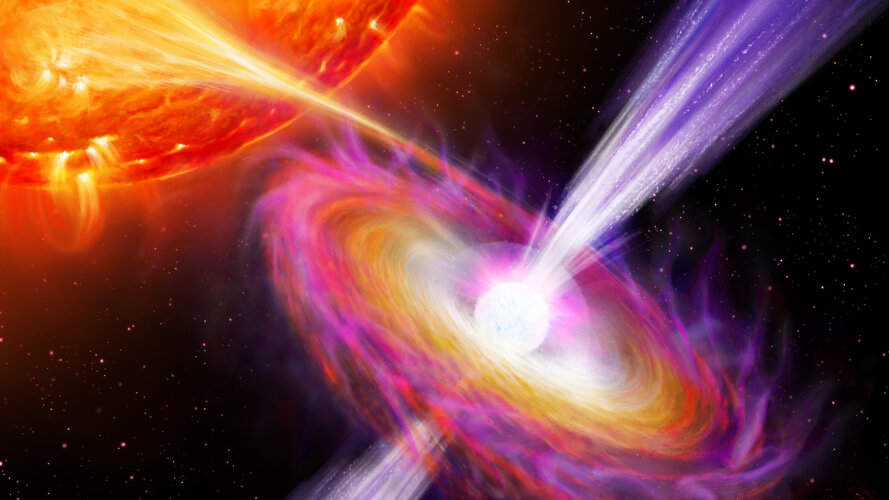On the hunt
This is a crucial measurement because once enough accreting neutron stars have been studied, the jet speed can reveal the dominant launching mechanism and show whether the jet is powered by magnetic fields anchored in the accreting material, or in the star itself. The team identified two neutron stars, called 4U 1728-34 and 4U 1636-536 respectively, that showed X-ray bursting behaviour. However, only 4U 1728-34 proved to be bright enough at radio wavelengths at the time to carry out the experiment in the necessary detail.
Then there was a practical problem. While the explosions were visible in X-rays, the jet only gave out radio waves. So, the team needed to coordinate radio telescope observations on Earth to take place simultaneously with those of the Integral satellite, that is able of seeing in X-rays. But, it was impossible to predict exactly when one of these explosions was going to take place.
“These bursts reoccur every couple of hours, but you can't predict exactly when they will happen. So, you have to stare at the system for a long time with the telescopes, and hope you catch a couple of bursts,” says team member Jakob van den Eijnden, University of Warwick, UK.
The radio observations were taken over three days with CSIRO's Australia Telescope Compact Array (ATCA), logging a total of around 30 hours of observing time between 3–5 April 2021. Integral observed from space. It was the only high-energy mission capable of maintaining this long vigil. Its large, elongated orbit meant that it could stare at the celestial object for many hours at a time. At the end of the observations, Integral had captured 14 X-ray bursts from 4U 1728-34, of which 10 occurred when the source was visible to the ATCA.
But there was a big surprise. “Based on what we had seen previously in X-ray data, we thought that the explosion would destroy the location where the jet was being launched. But we saw exactly the opposite: a strong input into the jet rather than a disruption,” says team member Nathalie Degenaar, University of Amsterdam, the Netherlands.
Clearly, the jet mechanism was more robust than thought. Being able to follow the injected extra matter down the jet at radio wavelengths allowed the team to calculate that the material was being launched at an incredible 35-40% the speed of light.
“Never before have we been able to anticipate and directly watch how a certain amount of gas got channelled into a jet and accelerated into space,” says team member Erik Kuulkers, ESA project scientist.



